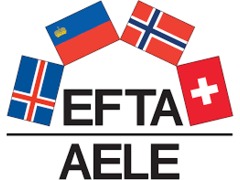EFTA-EEC Joint Committee
Documents from [1958] to [1989]Identity Statement
13 volumes, 32 files
Alonso Fernandez, Juan; Carr, Mary
Context
Following the Hague Summit in late 1969, negotiations between the Community and the non-applicant EFTA countries were initiated. The FTA's signed with the EEC and the ECSC also applied to trade with any new members of the Communities, while obviously allowing for transitional arrangements. The FTA's were hailed at the times as an important basis for cooperation between EFTA and the EEC.
The EFTA-EEC was the precursor to the EEA (European Economic Area) which allowed Iceland, Liechtenstein and Norway who were party to the Agreement to participate in the EU's Single Market, with compliance regulated by the EFTA Surveillance Authority and the EFTA Court. Switzerland instead has a set of bilateral agreements with the EU.
High officials from the EFTA countries and the Commission met on a regular basis to discuss: the free circulation of industrial products within the free trade system, the growth of cooperation in research and development and in such fields as transport, agriculture, fisheries and energy: they attempted to concert their policies with the aim of strengthening economic recovery and reduce unemployment.
